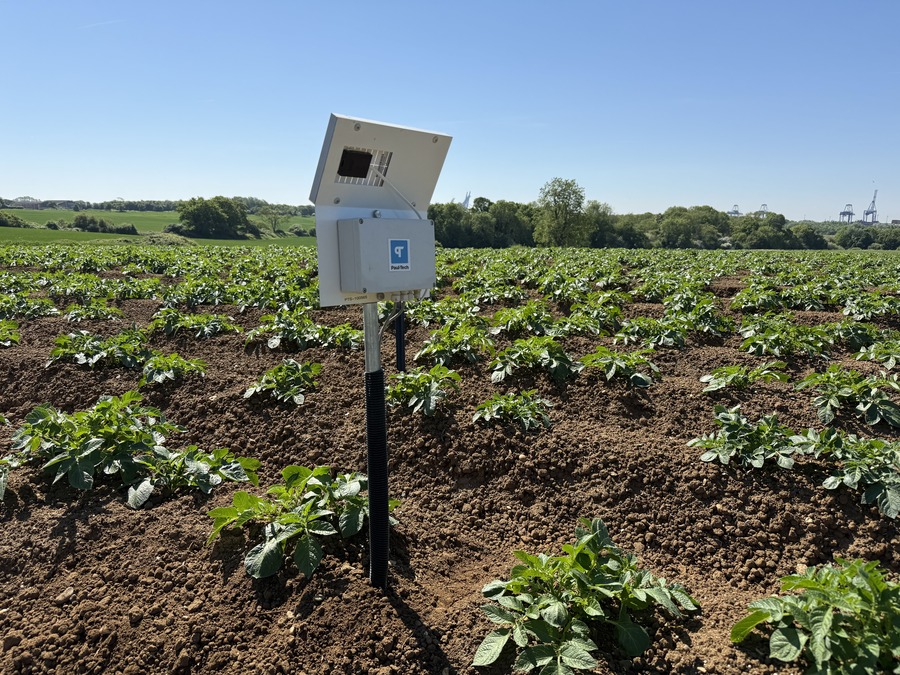
Fertilising crops has always involved a certain amount of guesswork. Even when using regular soil tests, it’s difficult to know how much of the nutrients in the soil are actually available to the plants—and whether additional fertilisation is needed at a particular moment. This uncertainty is something Paul-Tech set out to reduce.
Recent developments now allow farmers to monitor nitrate nitrogen (NO₃-N) levels in real time. The amount is displayed in kilograms per hectare, giving a clearer understanding of current conditions in the root zone. This precise view helps farmers plan fertilisation better. It gives them more confidence when making decisions during the season.
Beyond the Limitations of Traditional Soil Testing
Conventional soil sampling and laboratory analysis are widely used to assess soil fertility. These tests measure nutrient levels by extracting elements from soil samples using chemical solutions. While useful, they reflect potential rather than actual availability. Results depend on the method used, which varies by region or lab. Often, tests are done just once a year—or even once in five years.
However, plants do not draw nutrients from these extraction solutions—they absorb nutrients directly from the soil water surrounding their roots. This solution is constantly changing, influenced by moisture, temperature, soil type, biological activity, and previous fertiliser use. Relying solely on static lab results may overlook these day-to-day changes that affect plant nutrition.
How Real-Time Soil Monitoring Shows Nitrate Levels
Paul-Tech’s soil station monitors what’s actually dissolved in the soil water, near the root zone. One of the key indicators used is electrical conductivity (EC), which correlates with the total amount of dissolved ions—such as nitrate and sulphate—that are available for plant uptake.
This approach enables farmers to observe nutrient levels as they fluctuate. For example, nitrate nitrogen is a highly mobile nutrient that can leach quickly or be rapidly absorbed, depending on weather and plant demand. With access to real-time data, it becomes easier to judge whether plants have enough nitrogen, whether previous applications are still effective, and whether additional input is truly necessary.
What makes this solution stand out is its ability to display nitrate availability in kilograms per hectare. This form of presentation aligns with how fertilisers are applied and helps farmers relate the data directly to practice. The technology can also show how nutrient levels change after rainfall, irrigation, or fertiliser application, giving insight into how the soil responds to different conditions.
Understanding Nutrient Dynamics Through the Season
Nutrient uptake by plants happens through three main processes: mass flow, diffusion, and interception. Among these, mass flow plays the largest role for nitrate, which is taken up with water during transpiration. Since nitrate ions do not bind to soil particles as strongly as other nutrients, they remain dissolved in water and move easily through the soil.
This mobility is both an opportunity and a challenge. On the one hand, nitrate is readily available to crops when needed. On the other hand, it’s vulnerable to loss through leaching. With the soil station, farmers can track these shifts in real time and identify periods when nitrogen availability is too low or when leaching might have occurred.
The system also measures what’s known as the initial nutrient level (INL)—the baseline nutrient content of the soil at the start of the season before fertilisation. This helps characterise the soil’s natural fertility and provides context for interpreting changes throughout the growing period.
How to Use Real-Time Data to Manage Nitrogen Efficiently
Rather than replacing lab analysis, real-time measurement complements it. Laboratory tests remain valuable for understanding long-term nutrient reserves, while the soil station gives visibility into what is available to plants right now. Combining both offers a more complete picture.
As farming practices adapt to rising input costs, weather variability, and environmental goals, better insight into soil processes is increasingly important. Having up-to-date information about nutrient availability supports more targeted fertilisation and avoids unnecessary application. Over time, this can contribute to more stable yields and more efficient use of resources.
Smarter Fertilisation Starts with Better Insight
With nitrate nitrogen levels now visible in real time, farmers gain a clearer understanding of what’s happening in the soil at any given moment. This added visibility supports more informed, timely, and targeted fertilisation decisions—reducing uncertainty and making better use of every input.
For those looking to improve nutrient efficiency, minimise losses, and respond to changing field conditions throughout the season, real-time data offers a practical and science-based way forward.
Frequently Asked Questions
How can I measure nitrate in soil in real time?
With Paul-Tech’s soil station, nitrate nitrogen is monitored continuously near the root zone.
How do I check nitrogen levels in soil without lab tests?
Real-time sensors give you access to nitrate availability directly in the field.
Curious how this works on your field? Book a free demo or see case studies using real-time nitrate monitoring in action.